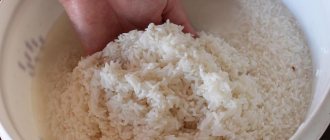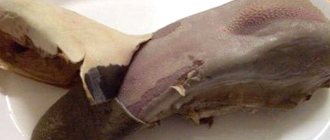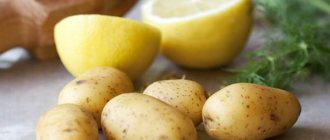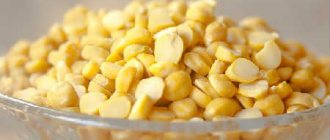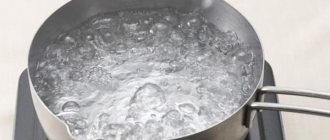Rice is one of the most popular food grains around the world. Unprocessed rice may collect and may have chemical contaminants. Find out how to rinse rice below because rinsing rice helps remove excess starch.
Almost every kitchen uses starchy grains with meats and vegetables. One of the reasons for the popularity of rice is that it is readily available and easy to prepare. It's nutritious and goes well with anything. Whether you like rice with stir-fried vegetables or grilled meats, or you want a starchy load in the form of desserts.
How to wash rice for pilaf
Some novice housewives are tormented by the question of how to rinse the cereal so as not to make the taste of the future pilaf worse?
Before washing the rice grains, you should remember some simple rules:
- You need to wash the cereal in clean and filtered water. Namely, tap water is not suitable for such a process. Why? Such water contains harmful elements and foreign odors, with which the cereal is immediately impregnated during the first rinsing.
- You should use warm or ice water, it depends on the type of cereal. Processed grains are usually washed in warm liquid. Expensive rice varieties (basmati, jasmine, red and brown rice) are washed in ice water. Basmati only needs to be doused with water; other types of grains need to be washed until the water is clear.
- Rice grains must be washed at least 6 times. One or two sinks is not enough. It is very important that all foreign elements contained in it are washed out of the rice. For this purpose, thorough rinsing is necessary.
- If necessary, soak the cereal. And definitely, in drinking clean water. For this purpose, heated water to approximately 65 C is used. It will better remove excess starch. In addition, warm water is much easier to absorb into the grains, so the rice grains will absorb less oil during cooking, and the pilaf will turn out to be a light and dietary treat. The optimal holding time is about half an hour. And it is strictly forbidden to pour boiling water over the cereal: the side dish will turn into a boiled lump.
- The grains should be washed after soaking. Even cold tap water will do for this purpose. Place the cereal in a cup, add water, stir with a spoon. Next, drain the liquid. And this procedure should be repeated several times.
That's all. Well-washed rice is ready for cooking. Rest assured: every treat prepared from properly washed cereal will be tender and quite nutritious.
Yandex pictures
Cooking method
You should rinse the kernels after cooking only if you need to get a crumbly side dish, grains for sushi, rolls or salad.
How the rice turns out and whether there will be a need for rinsing after cooking largely depends on the cooking method:
- You may end up with a sticky mass in the pan. If you want it to be crumbly, transfer the porridge to a colander and rinse until all the starch and gluten are washed out;
- There is no need to rinse the kernels after microwave. Rinse them thoroughly under the tap, place them in a special bowl for microwave ovens and fill them with cold water in proportions of ½, add salt and spices to taste. Then turn on the power to about 500 W and the time is 15-18 minutes. At the end of the time, leave for 10 minutes and serve;
- pilaf or viscous milk porridge is most often prepared in a slow cooker. The cereal is washed, poured with three glasses of water per glass of rice and the required mode is selected. Most often there is no need to rinse after this;
- but crumbly kernels are obtained in a double boiler and used in the diet of adherents of proper nutrition.
Do I need to soak rice for pilaf?
After carrying out many studies, scientists found that the cereal contains a large amount of starch. This affects its viscosity in making most treats. This especially applies to pilaf. The more starch there is in the cereal, the worse it is for the pilaf. Because we are already accustomed to seeing golden brown buttery rice soaked in lamb fat. Starch prevents rice grains from being soaked, making the grains dry. Therefore, before you start preparing pilaf, the cereal should be soaked in warm, clean water.
1 hour is enough for the grains to increase in volume, crack along the edges and free themselves from excess starch. It is precisely into these very cracks that oil or fat fully penetrates and saturates the treat. When soaking cereal, it is preferable to change the water at least 2 times. In clean water, the side dish releases starch much better.
If you take this into account, literally after a quarter of an hour the grains will begin to increase slightly in volume. This means that it will take less time to cook in a cauldron.
How to properly soak rice for pilaf:
- Only clean running water is used.
- Soak in a glass container.
- Before the process, all the grains are thoroughly washed so that all excess is removed with the liquid.
- The dishes are left on the table.
- Before cooking, the cereal is washed again.
These are the simple rules for working with the most famous grain, which will help you prepare the most delicious porridges and crumbly dishes.
Many housewives advise soaking the cereal in salt water. The cereal will absorb as much salt as needed.
Cooking the perfect porridge
First you need to choose the right variety. Buy brown or unpolished, as they are much healthier for the body. The steamed or round variety will not work.
Since such grains cannot be steamed overnight, we will cook it for several days. To make this process more convenient, and for you to always have a ready-made portion at hand, use a special cooking system according to Malakhov:
- Take glass jars of the same size, marked 1, 2, 3 and 4;
- On the first day, pour four tablespoons of grains into jar No. 1 and fill with water;
- On the second day, change the liquid in the first jar and pour a portion into the second;
- On the third day we change it in two jars and make the preparation in the third in the same way;
- Fill the last jar with cereal and change the water in the first three again;
- On the fifth day you can start drinking the first portion. As soon as you empty it, fill it again and let it sit until ready, not forgetting to change the water every day.
This way, you will have prepared porridge on hand to eat on an empty stomach, and you won’t have to cook it until it’s ready. 3-4 tablespoons of grains is a conventional value, and you have the right to change this amount depending on your appetites and needs.
It doesn’t matter what kind of water you steam in – either cold or hot will do.
Video: Cleansing the body with rice
To cleanse the body, you should consume the product in the morning in this order:
- After waking up early in the morning, drink a glass of herbal or green tea. It will start metabolic processes and “awaken” the stomach from sleep;
- After half an hour, you can move on to your meal. It is prohibited to add butter, sugar or salt to the dish;
- Then you cannot eat or drink anything for 3-4 hours.
For lunch and dinner you can afford whatever you want. The exception is fried and fatty foods, as well as alcohol and milk.
How long
Having soaked the cereal overnight (for 7-8 hours), in the morning it will definitely be ready for making pilaf. But the hardness of the grains should be taken into account. If they are not completely solid, and they will get wet for a long time, then even before the liquid boils, they will be able to boil. Therefore, this method is only suitable for solid species. Some soft types are saturated after 30 minutes, while other hard ones, for example, devzira and basmati, after a few hours. Over the years, one begins to understand how long each variety needs to be aged.
If you keep the cereal in hot water, only 2 hours is enough, if in cold water – from three hours. It is recommended to soak red rice for 3-5 hours - the boiling time will noticeably decrease. The brown variety of cereal requires a special approach - it is hard, and for cooking it is worth soaking it for 8-12 hours.
pixabay.com
Reviews
Inna, 47 years old, Saratov
Before cooking, I rinse any rice except arborio, then its maximum stickiness is preserved. I cook for 18 minutes, stirring constantly, turn off the heat, wait 2-3 minutes, during which time it reaches readiness and is not overcooked.
Sergey, 35 years old, Rivne
Expensive rice does not require long rinsing and always turns out fluffy and tasty. Therefore, I choose basmati or, even better, white devzira (lazar). I rinse it once and leave it in warm water for 1.5-2 hours to absorb it, then wash it again and cook over low heat for 30 minutes. It always succeeds without much hassle.
Veronica, 38 years old, Tyumen
My grandmother taught me to wash the rice in salted water, which makes it whiter. To make it more crumbly, I cook it by adding a piece of butter.
Anatoly, 27 years old, Chelyabinsk
My wife saw that he had poured unwashed steamed rice into the pan and we even quarreled. It turns out that it must be washed; the quality of the finished dish largely depends on this. We decided to experiment and wash it in water of different temperatures to find our own recipe. I liked all the options.
Source
Do I need to soak parboiled rice?
The steamed variety is the easiest for kitchen masterpieces. How long will such peeled grains last to become the most crumbly side dish? The answer is from 30 to 2 hours.
Red rice
This type of cereal is soaked for 3-5 hours. Moreover, we should not forget that after this process, the time for boiling rice is reduced by almost 2 times.
Yandex pictures
Brown (brown) rice
This cereal needs a special approach: if it is not soaked, it simply will not cook. The shells of the grains are quite rough and contain a large number of inhibitors. To cook brown rice, you need to soak it for at least 8-12 hours.
Yandex pictures
Should I wash before cooking?
The following varieties are used for most dishes:
- The wild one is the healthiest, but is rarely used in the diet because it is unusual in its taste and appearance. It is not rinsed either before or after cooking. Unless it was bought by weight, and if it was purchased already packaged, then there is no need for this.
- Basmati is not washed. Its long, thin grains do not stick together, and given the high quality of the product, the grains are always sold clean.
- Round grain always sticks together during cooking. Therefore, you must either buy it for preparing porridges and puddings and then do not wash it, leaving the mass sticky, or wash it thoroughly after cooking so that the grains are separated from each other.
- The long-grain variety rarely sticks together, but giving it an extra rinse after cooking won’t hurt.
- Medium grain. It is used when cooking first courses, as well as preparing risotto. Therefore, it doesn’t hurt to wash it sometimes.
- Rice packaged in bags, of course, does not need to be subjected to this procedure. Packaged grains will turn out crumbly anyway.
A few recommendations for delicious pilaf
Knowing how to properly make a side dish is quite important. But this is not all that is needed to make real pilaf that your family and friends will admire. Here are some more useful tips that will certainly be very useful to you:
- Some chefs use beef to make pilaf. But this is not the best choice, since the dish turns out too dry. It is much better to take beef or pork. Chicken is also allowed if that's your preference.
- The oil used is important. Uzbeks always take two - cotton and sesame, and also always add fat tail fat. This results in a richer aroma.
- To ensure a successful pilaf, it is recommended to use a cast iron, copper or aluminum cauldron. This may seem unusual, but the material of the cookware has a great influence on the taste of the dish.
These tips can help you make the perfect pilaf that has amazing texture and flavor. Stick to them, and you can please your family with an incredibly tasty dish, using the cheapest grains and spending a minimum amount of time and effort.
So, rice should definitely be soaked. The purpose of washing and soaking grains is well known: the grain is cleared of unnecessary starch, acquires an interesting shade, becomes crumbly and makes the taste of the dish more vibrant and appetizing. The suitable temperature for soaking in water is 60 C. Steamed rice grains can also be soaked, but this is not necessary. In addition to everything, you need to wash any grains. First, this is used for hygienic purposes - to clean dust, dirt and possible chemicals. substances.
pexels
Fragrant fluffy rice with onions and carrots as a side dish
An appetizing and bright side dish for your dinner table - rice with carrots and onions. The product comes out crumbly and aromatic. The culinary solution will complement any hot dishes.
Cooking time: 30 minutes
Cooking time: 15 minutes
Servings – 4
Ingredients:
- Rice – 200 gr.
- Onions – 1 pc.
- Salt - to taste.
- Ground black pepper - to taste.
- Vegetable oil - for frying.
Cooking process:
1. Fill the rice with cold water for a short time, then rinse it under running water a couple of times. Place in a colander with a fine mesh.
2. Peel the onion and carrots. We wash the vegetables.
3. Chop the onion and fry it for 1-2 minutes in vegetable oil over moderate heat.
4. Grate the carrots on a coarse grater and place the ingredient in the pan with the onions.
5. Fry the vegetables until soft. Add salt and ground black pepper to taste.
6. Add washed rice to the contents.
7. Distribute the product evenly over the pan and fill with water.
8. Cook the dish for about 10-15 minutes until fully cooked.
9. Stir the side dish with vegetables and place on plates. Serve with your favorite meat dishes. Bon appetit!
Report a bug
Sushi dressing recipe
Components:
Mirin (white vinegar) – 50 g; Mitsukan (sweet wine) – 45 g; Kombu – 2 g; Granulated sugar – 30 g.
This amount is enough for 600 g of cooked rice.
Procedure:
Combine granulated sugar, rice vinegar (mirin) and rice wine (mitsukan) and stir thoroughly. The sugar should completely dissolve. Place on the heat, add kombu and cook for at least 15 minutes. During this time, the gelling substances from the seaweed will pass into liquid, and it will acquire a viscous, jelly-like structure. Remove from the stove and cool to room temperature. Use immediately after preparation, avoiding long-term storage.


